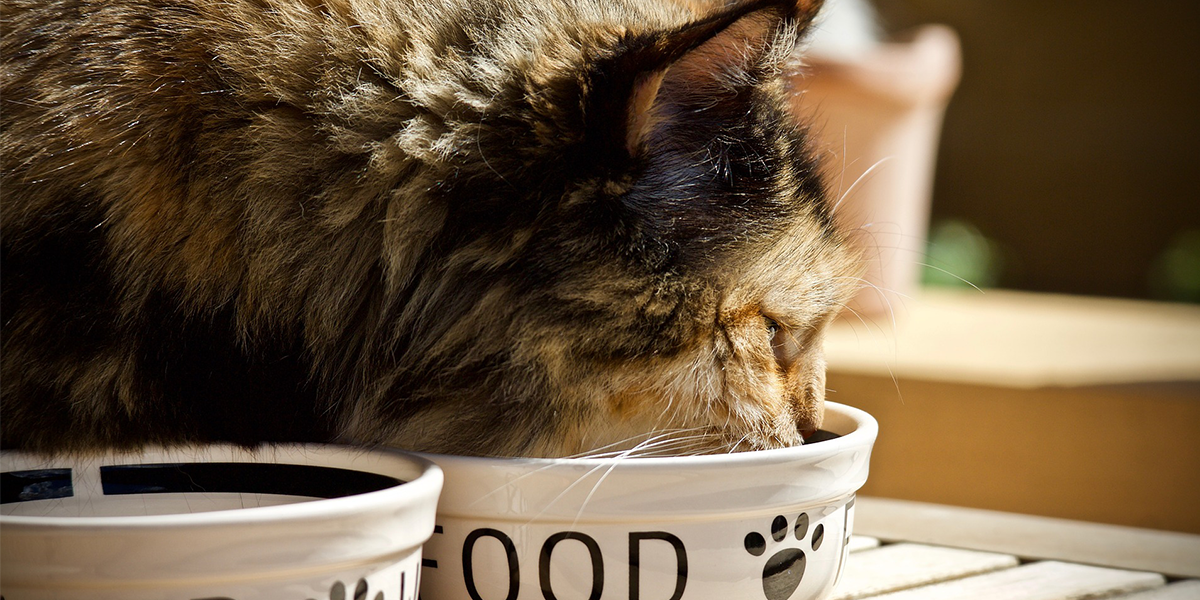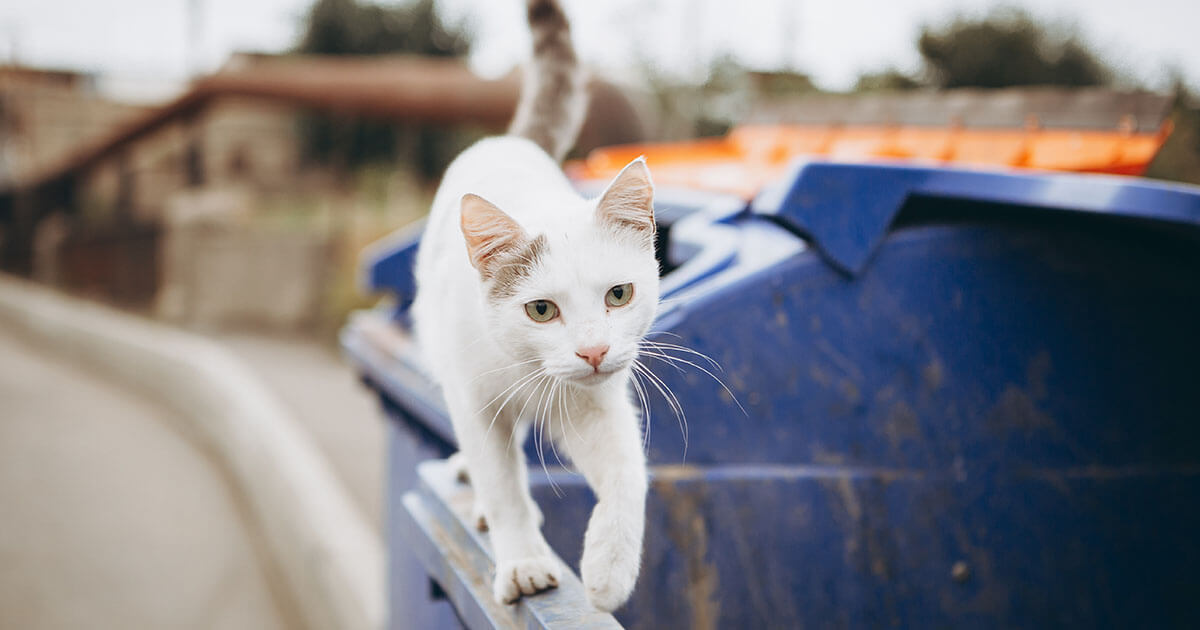Stray cats should eat at least once each day. Feeding consistency helps maintain their health.
Stray cats roam our neighborhoods, often unseen until they emerge to hunt or seek food. These feline wanderers face numerous challenges, with food scarcity at the top of their survival list. They rely on the compassion of animal lovers who provide meals, ensuring that they receive the necessary nutrition.
A daily feeding routine is not only beneficial for the cats’ physical well-being but also fosters trust, paving the way for potential adoption. The community plays a crucial role in the support of stray and feral cats, and understanding their feeding needs is a key step in their care. By establishing regular feeding practices, we can improve the lives of these independent yet vulnerable animals.

Credit: icatcare.org
The Plight Of Stray Cats
Imagine a life without a warm home and regular meals. This is the plight of stray cats. These felines face daily challenges just to survive. A vital aspect of their struggle involves finding enough food.
Street Life And Nutrition
Stray cats on the streets must fend for themselves. Their sources of food are often limited and inconsistent. Despite their hunting prowess, they rely heavily on food scraps and the occasional good will of humans. Unlike pets, their eating patterns are unpredictable. A regular feeding schedule can greatly improve their well-being.
Health Risks Of Irregular Feeding
When stray cats do not eat regularly, they risk developing health issues. Inconsistent meals can lead to malnutrition, weakened immune systems, and greater susceptibility to diseases. Here are some risks associated with irregular feeding:
- Malnutrition: Cats need a balanced diet; irregular feeding often means they miss out on essential nutrients.
- Weakened Immune System: Without the right nutrition, strays can’t fight off infections effectively.
- Disease Susceptibility: Malnourished cats may fall prey to contagious diseases more easily.
Offering food to stray cats can help, but it’s important to do so responsibly. Communities can benefit from establishing feeding programs that provide meals on a regular schedule. This approach helps ensure stray cats have access to the consistent nourishment they require.

Credit: abroader.org
Assessing A Stray Cat’s Nutritional Needs
Understanding the dietary needs of stray cats is key to helping them thrive. These animals may not have consistent access to food, so a clear feeding plan is vital. Let’s explore how to meet their nutritional requirements.
Age And Dietary Requirements
Age plays a crucial role in a stray cat’s diet. Kittens, adults, and seniors have different needs:
- Kittens: Require frequent meals with high protein and calorie content.
- Adult cats: Need balanced meals, usually twice a day.
- Senior cats: Benefit from easy-to-chew food that’s rich in fiber.
Note: Fresh water should always be available for cats of all ages.
Recognizing Signs Of Malnutrition
Signs of poor nutrition in stray cats are vital to recognize. Key indicators include:
| Signs of Malnutrition | What to Look For |
|---|---|
| Poor Coat Quality | Dull fur, hair loss, dry skin |
| Weight Loss | Visible ribs, spine, and hip bones |
| Lethargy | Less movement, loss of interest in surroundings |
| Digestive Issues | Diarrhea, vomiting, irregular bowel movements |
If you observe these signs, the cat may need better nutrition. A visit to the vet will ensure the right diet plan.
Feeding Frequency For Feral Felines
Caring for stray cats often leads to questions about their diet and health. Understanding how often stray cats should eat is vital to their welfare. Stray, or feral, cats live outside the comfort of a home. They rely on their hunting skills or the kindness of humans for food. Unlike domestic cats, their meals are unpredictable. This makes feeding frequency an important topic for their human caregivers.
Daily Portions For Strays
Consistency brings numerous benefits to stray cats. A daily feeding schedule provides regular nutrition. This helps in maintaining their health. Here’s a basic guideline:
- Kittens: At least three times a day
- Adult strays: Once or twice a day
Offer food at the same times each day. This helps them know when to return for their next meal.
Balancing Overfeeding Concerns
While feeding strays shows compassion, it’s crucial to avoid overfeeding. Obesity can be as harmful to strays as it is to pet cats. Stick to measured portions. Aim to maintain a healthy weight for the cats. Here are some tips:
| Condition | Portion Adjustment |
|---|---|
| Underweight | Increase food slightly |
| Overweight | Decrease food gradually |
| Ideal weight | Maintain current portion |
Remember, it’s not just about the quantity of food but also the quality. A balanced diet promotes a healthy life for these independent felines.
Choosing The Right Food
Feeding stray cats can be a heartwarming act. It’s crucial to provide proper nutrition. This helps them stay energetic and healthy.
Commercial Vs. Home-cooked Meals
Selecting between commercial food and home-cooked meals can influence a stray’s health. Commercial foods offer balanced nutrition. They are made for a cat’s dietary needs.
On the other hand, home-cooked meals allow for personal touch. Ensure they consist of the right proteins, fats, and vitamins.
| Meal Type | Pros | Cons |
|---|---|---|
| Commercial | Convenient, Balanced nutrients | Can be costly, Less fresh |
| Home-cooked | Fresh, Customizable | Time-consuming, Nutritional balance risk |
Foods To Avoid
Some foods can harm cats. Keep these away from strays:
- Onions and garlic – Damage red blood cells
- Chocolate – Contains theobromine, toxic to cats
- Alcohol and caffeine – Can cause health issues
- Grapes and raisins – Can lead to kidney failure
Ensure the diet is cat-safe. Always offer fresh water. Cats need constant access to water.
Creating A Safe Feeding Environment
Creating a Safe Feeding Environment for stray cats is vital. It ensures the cats feel secure while eating. This helps them eat at regular times, which is important for their health.
Ideal Locations For Feeding
Choosing the right spot for feeding strays is key. Look for areas that are:
- Quiet: Away from traffic and loud noises.
- Sheltered: Protection from bad weather.
- Safe: Away from potential threats or harm.
Think of places like under a porch or in a quiet alleyway. Make sure the location is constant. Cats learn and remember where they get food. A regular spot helps them know where and when to find their next meal.
Managing Human-feline Interactions
It’s vital to keep a balance when feeding stray cats. Good practices include:
- Limiting Contact: It keeps cats wild and wary for safety.
- Observing from a distance: This gives cats space and trust.
- Cleanliness: Always clean feeding areas after use. This prevents disease and keeps other wildlife from being attracted to the site.
Remember to respect the cats’ space. Too much contact can make them too comfortable with humans. This could be dangerous for both the cat and human in different areas.

Credit: www.modernpet.com.au
The Role Of Community In Stray Cat Care
The Role of Community in Stray Cat Care involves a shared responsibility. Stray cats roam our neighborhoods searching for food and shelter. They depend on the kindness and actions of the community to survive. Whether you’re a cat lover or just a concerned citizen, learning how often stray cats should eat and understanding the best way to care for these community cats can make a significant difference in their lives.
Local Rescue Efforts
Charitable organizations and volunteers lead the charge in rescuing and caring for stray cats. Local rescue groups often manage Trap-Neuter-Return (TNR) programs. They prioritize healthier colonies and control stray populations. They also set up feeding schedules ensuring that stray cats eat properly.
- Weekly TNR schedules help maintain colony size.
- Community feeding stations provide consistent meals.
- Veterinary care, including regular check-ups and vaccinations, is crucial.
Educating The Public On Stray Cat Feeding
Awareness is key in community cat care. Misinformation can lead to either overfeeding or neglect. Public education initiatives focus on teaching people the importance of maintaining feeding routines without disrupting the cats’ natural behaviors.
| Do’s | Don’ts |
|---|---|
| Feed at the same time each day | Leave food out that can attract pests |
| Use designated feeding areas | Feed in areas that are unsafe for cats |
| Provide fresh water | Ignore the cats’ health needs |
Flyers, social media outlets, and community workshops can spread valuable information. Inform folks about the right ways to feed stray cats. Teach them about nutrition and the importance of not overfeeding.
Frequently Asked Questions On How Often Should Stray Cats Eat
How Much Should A Stray Cat Eat A Day?
A stray cat typically requires about 200 calories per day, equating to approximately 5. 5 ounces of wet cat food or the equivalent in dry food. Individual needs may vary based on size, activity level, and health.
How Long Can Stray Cats Go Without Food?
Stray cats can survive without food for about two weeks, but their health will deteriorate without proper nutrition.
How Often Do Stray Cats Get Hungry?
Stray cats typically experience hunger several times a day, similar to domestic cats, needing to scavenge or hunt frequently to sustain themselves.
Is It Ok To Leave Food Out For Stray Cats?
Leaving food out for stray cats can help them, but do it responsibly. Provide fresh water and appropriate food. Avoid overfeeding to prevent attracting unwanted wildlife. Be mindful of local ordinances that may restrict feeding strays.
Conclusion
Judging the appropriate feeding frequency for stray cats can be nuanced. Aim for at least once per day to maintain their health and energy levels. This rhythm supports their well-being without fostering dependency. Remember, your kindness helps sustain these feline friends and contributes to a compassionate community.

